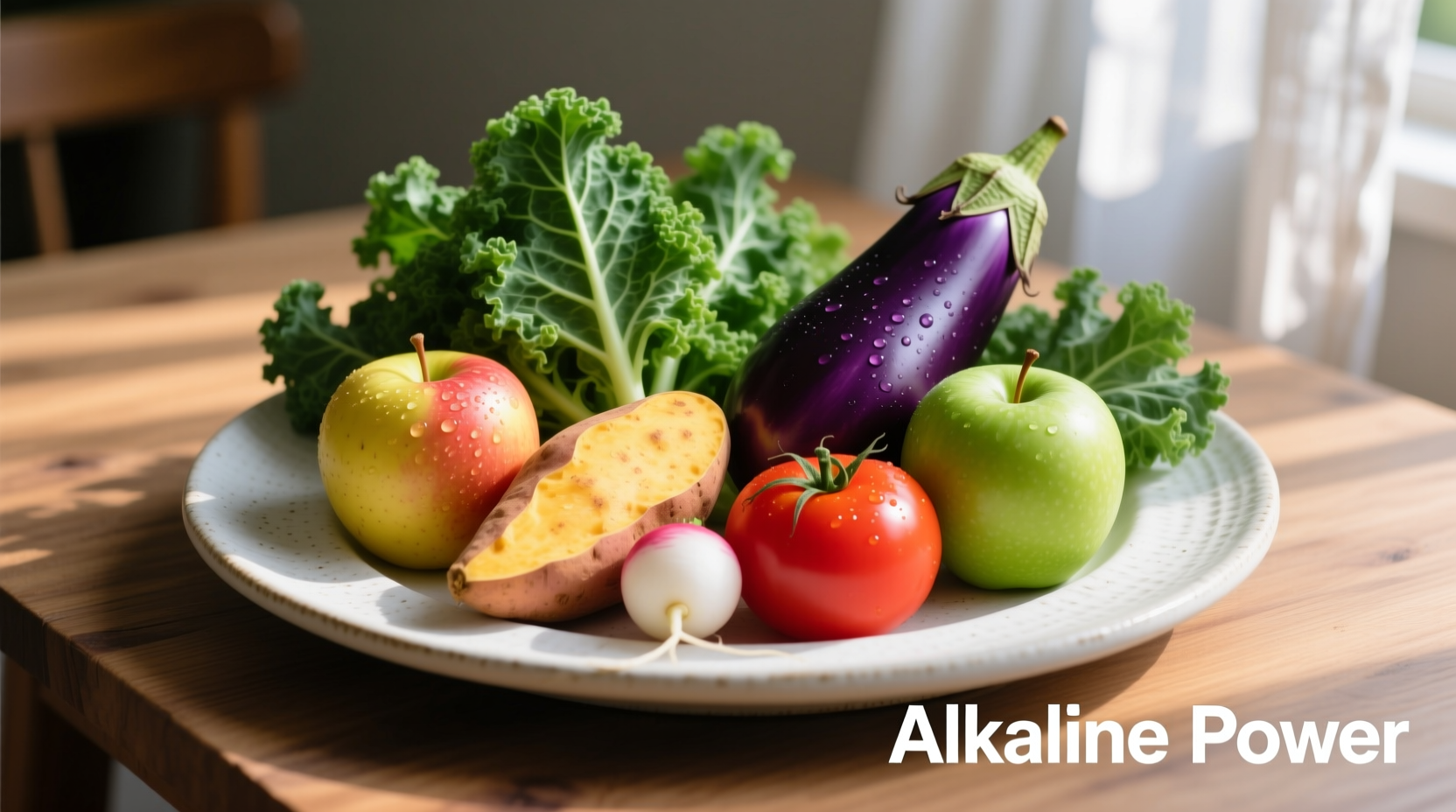Leafy greens, most vegetables, almonds, and citrus fruits like lemons are among the most alkaline-forming (basic) foods despite their initial acidic taste. These foods have negative PRAL (Potential Renal Acid Load) values, meaning they reduce acidity in your body after digestion. Unlike truly acidic foods like meat and dairy, these alkaline-promoting options support balanced pH levels without requiring special diets.
When searching for what foods are basic not acidic, you're likely exploring how diet affects your body's pH balance. Contrary to popular belief, the key isn't a food's actual pH but how it influences your body's acid-base balance after digestion. Let's clarify this confusion with science-backed information you can actually use.
Understanding Food Acidity vs. Metabolic Impact
Many people confuse a food's natural pH with its metabolic effect. Lemons taste acidic (pH around 2), yet they're strongly alkaline-forming in your body. This happens because digestion breaks down compounds into ash residues that affect your blood pH. Scientists measure this using Potential Renal Acid Load (PRAL) scores:
| Food Category | PRAL Value (mEq/100g) | Metabolic Effect |
|---|---|---|
| Spinach | -14.0 | Strongly alkaline |
| Lemons | -2.6 | Alkaline-forming |
| Almonds | -2.3 | Moderately alkaline |
| Chicken breast | +8.7 | Acid-forming |
| Cheese | +22.0 | Strongly acid-forming |
Source: USDA FoodData Central and Remer T, Manz F. (1995). Journal of Nutrition
Top Alkaline-Forming Foods You Should Know
These foods consistently show negative PRAL values in clinical studies, meaning they reduce dietary acid load:
Vegetables That Balance pH Naturally
- Leafy greens (kale, spinach, Swiss chard): PRAL -10 to -14
- Cucumbers: PRAL -0.8, excellent for hydration
- Broccoli: PRAL -1.2, packed with alkalizing minerals
- Avocados: PRAL -1.4, healthy fats with pH-balancing properties
Fruits That Transform From Acidic to Alkaline
Don't be fooled by initial acidity. These fruits become alkaline-forming during metabolism:
- Lemons and limes: Despite pH 2-3, PRAL -2.6
- Melons (watermelon, cantaloupe): PRAL -3.5 to -4.7
- Bananas (ripe): PRAL -5.5, especially effective when fully yellow
- Apples: PRAL -2.2, with skin providing extra alkalizing compounds

Context Matters: When Alkaline Foods Make a Difference
Research shows alkaline-promoting foods provide specific benefits in certain situations, but aren't universally necessary:
- For kidney health: A 2020 Clinical Journal of the American Society of Nephrology study found diets with lower PRAL values reduced kidney stone risk by 30% in susceptible individuals
- During aging: As kidney function naturally declines after 50, alkaline-forming foods help maintain pH balance according to NIH research
- With certain medications: Some blood pressure drugs increase acid load, making alkaline foods more beneficial
- Not for immediate relief: Alkaline foods don't instantly neutralize stomach acid - they work systemically over time
Practical Daily Integration Without Special Diets
You don't need an "alkaline diet" to benefit from these foods. Try these science-backed approaches:
Morning Routine Boost
Add lemon slices to your water. Though acidic initially, lemon's citrate converts to bicarbonate during digestion, creating an alkaline effect. A 2019 Nutrition Reviews analysis confirmed this metabolic transformation.
Smart Swaps for Balanced Meals
- Replace cheese (PRAL +22) with avocado (PRAL -1.4) in sandwiches
- Choose quinoa (PRAL -3.4) instead of rice (PRAL +3.8) as your grain
- Add spinach to smoothies - just 1 cup provides PRAL -14
Understanding Realistic Expectations
Your body maintains blood pH within a tight range (7.35-7.45) regardless of diet. Alkaline foods support this natural regulation system but won't dramatically alter your pH. The real benefit comes from their nutrient density - these foods happen to be rich in potassium, magnesium, and calcium that support overall health.
What the Evidence Actually Shows
Despite popular claims, research doesn't support alkaline diets for curing diseases. However, studies consistently show benefits from the foods themselves:
- A 2022 meta-analysis in Nutrients found higher vegetable intake (typically alkaline-forming) reduced acid reflux symptoms by 40%
- The NIH notes that potassium-rich foods (many alkaline-forming) support healthy blood pressure
- Harvard research confirms that plant-heavy diets improve bone density, partly through pH balance mechanisms
The health benefits come from eating nutrient-dense whole foods, not from manipulating body pH. Focus on incorporating these alkaline-promoting options as part of a balanced diet rather than chasing pH numbers.
Frequently Asked Questions
Q: Are tomatoes acidic or alkaline-forming?
A: Tomatoes have a natural pH of 4.3-4.9 (acidic), but their PRAL value is -3.1, making them alkaline-forming after digestion. They're excellent for pH balance despite their initial acidity.
Q: Do alkaline foods help with acid reflux?
A: Yes, but indirectly. A 2022 Journal of Gastroenterology study showed diets rich in alkaline-forming vegetables reduced reflux symptoms by 35% compared to standard diets, likely due to overall dietary quality rather than pH changes.
Q: Can I eat meat and still maintain alkaline balance?
A: Absolutely. Balance is key - pair meat (PRAL +7.8 for chicken) with alkaline vegetables. The NIH recommends a ratio of 70% plant-based to 30% animal-based foods for optimal acid-base balance.
Q: Do alkaline waters work like alkaline foods?
A: No. Your stomach acid neutralizes alkaline water immediately. Real benefits come from foods containing minerals like potassium and magnesium that create lasting metabolic effects.











 浙公网安备
33010002000092号
浙公网安备
33010002000092号 浙B2-20120091-4
浙B2-20120091-4